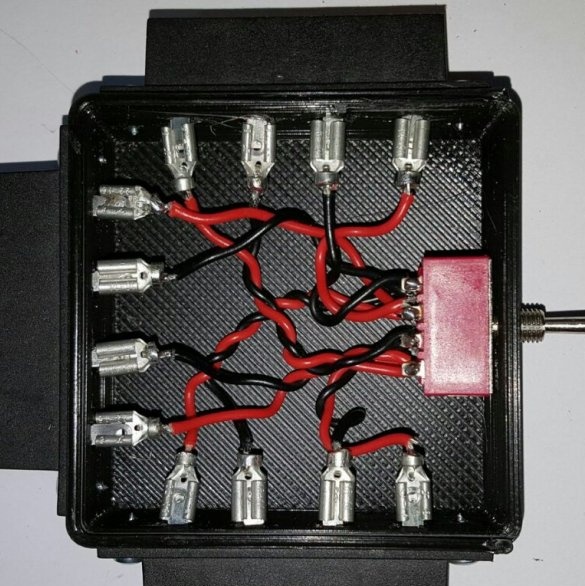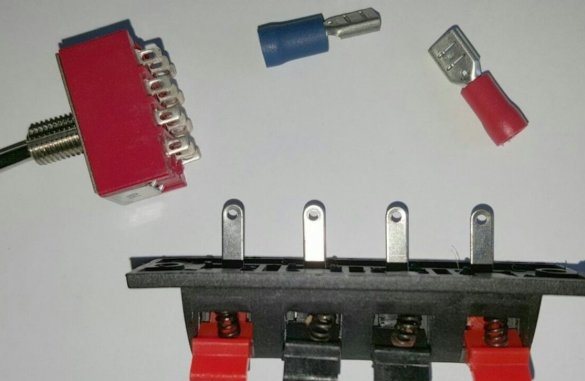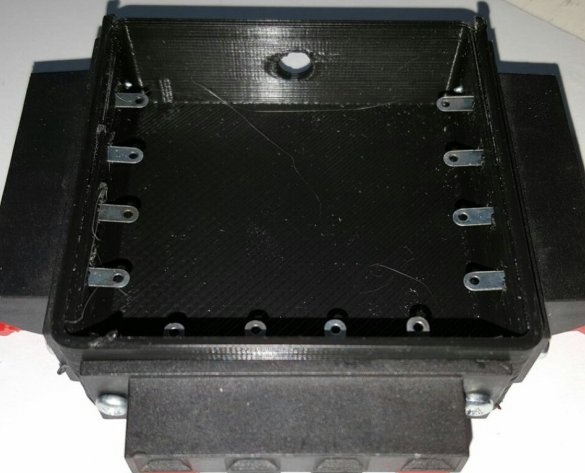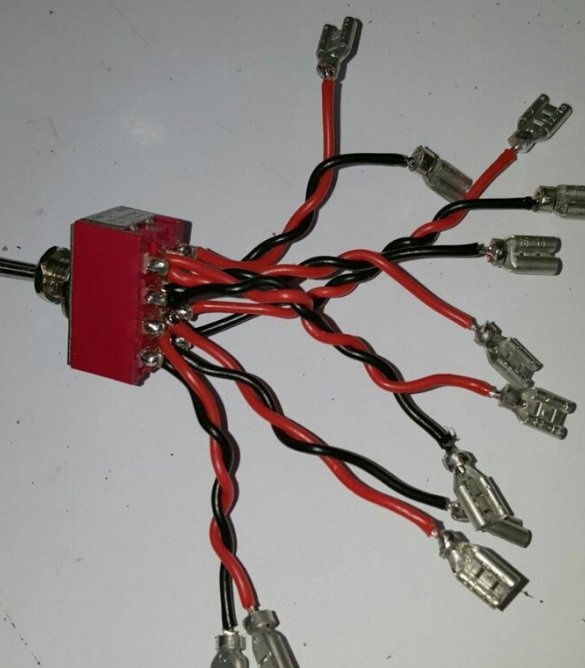I have already translated an article about input selectorintended for alternately connecting to a single amplifier various signal sources. But there are output selectors that allow you to connect the same set of speakers to two different amplifiers in turn. Without any changes, such a selector can be adapted to alternately connect two sets of speakers to one amplifier. It all depends on what you want to compare with each other - amplifiers or speakers. Or, for example, choose in which of the two rooms the music will sound. Or you have two music centers, in one of which there is a cassette player, a CD drive and a tuner with an extended range (65 - 108 MHz), but there is no input for a flash drive, and in the other - vice versa. There are many applications, but the device, simple and useful, is one. A good option is homemade suggested by Instructables under the nickname btidey.
Selector housing - 3D-printed, files necessary for printing its parts are located on Thingiverse website under CC-BY 3.0 license. You can also assemble the device in an ordinary junction box. To connect an amplifier and speakers to it, four-pin spring clips are used, similar to those used on the amplifiers and speakers themselves. Plastic levers on them allow you to disconnect and connect the conductors without the use of tools. On the reverse side of such a terminal block there are petals that can either give in to tinning or not. In the second case, it is necessary to use RPPI connectors or similar, which the master did. And another selector component is a toggle switch with four groups of switching contacts.
Toggle switches with so many contact groups, especially switching ones, are quite rare. The master himself offers one replacement option: apply a relay. If there are not enough contact groups on it, then not one. Then you need a power supply, but you can control the selector from the sofa with a remote control with an ordinary toggle switch connected by a two-wire cord. So that the contacts of the toggle switch in the console do not wear out from sparking, a diode in reverse polarity should be connected parallel to the relay coil.The second option is to use the “designer” switch, for example, the XB5 or LAY5 series (the second is cheaper, but not worse). Any of them allows you to assemble a switch with exactly the number of contact groups that you need.
The master starts assembling the output selector by installing all three terminal blocks in the chassis. In a configuration with two amplifiers, the middle terminal block is used to connect a single set of speakers, and in the case of two sets of speakers, a single amplifier must be connected to the middle terminal block.
Then the master connects to the toggle switch wires ending with connectors similar to the FIR:
After that, he proceeds to connect the connectors to the petals of the terminal blocks facing the inside of the case. To do this, he connects the conductor going from the middle contact of the first contact group of the toggle switch to the first lobe of the middle terminal block. A conductor going from the contact of the first group of the toggle switch corresponding to the first position leads to the first lobe of the left terminal block, and going from the contact of the first group corresponding to the second position leads to the first lobe of the right terminal block. Similarly, the master connects the second, third and fourth petals of all three terminal blocks.
The output selector is ready to connect and use. In a configuration with two amplifiers, it is desirable that both of them are designed for continuous operation without load. If any of them does not meet this requirement, use the switch carefully, turning off the power to the amplifier before disconnecting the speakers from it, and including after connecting.




